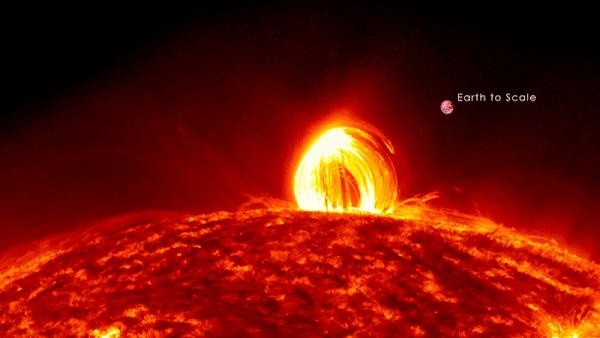The sunlight is still sparkling and bubbling. If large enough eruptions occur on the surface, billions of tons of plasma and electrically charged particles will be hurled against Earth.
In February 2020, NASA and the European Space Agency (ESA) deployed the Solar Orbiter probe to detect and research these types of explosions, known as coronal mass ejections (CMEs).
As Science Times reported this year, the Solar Parker Probe traveled within 48 million miles (77 million kilometers) of our star on Feb. 10, bringing it within half the distance between the sun and Earth. The orbiter captured video footage of two CMEs as it flew past the sun and back to cooler areas of space.
Three imaging instruments tracked the CME as the spacecraft left the sun and spread into space. The first instrument took images of the sun. At the same time, the second collected radiation flowing into the sun's corona or outer atmosphere.
A third imager captured the stream of electrically charged rocks, ashes, and cosmic rays streaming out into space from the explosion.
Solar Storms Could Cause Harmful Space Weather
This type of outburst is spectacular because it often interacts with Earth's atmosphere to produce the aurora lights, but it can also be harmful.
Quebec's electricity was washed out for about nine hours in 1989 due to an inundation of electrically charged particles from the sun. Shortly after Hurricane Irma in 2017, two other solar storms knocked out emergency radio services for 11 hours. Business Insider claimed that a solar storm might have cut off SOS broadcasts from the Titanic in 1912 as the ship sunk in 1912.
Solar flares may also put astronauts in danger by messing with their spacecraft or disrupting contacts with mission control.

That's why the Solar Orbiter is looking at all kinds of eruptions. Scientists will be able to learn how to safeguard astronauts and the Earth's power grid by investigating the cause of these unpredictable electrical storms.
"What we want to do with Solar Orbiter is to understand how our star creates and controls the constantly changing space environment throughout the solar system," Yannis Zouganelis, an ESA scientist working on the mission, said last year in a New Scientist report. "There are still basic mysteries about our star that remain unsolved," Zouganelis added in the same report before the probe launched.
Solar Explosions From Two Sides of the Sun
Two other ESA satellites, the Proba-2 satellite and the Solar and Heliospheric Observatory (SOHO), captured the same two CMEs on the other side of the sun, near Earth. Proba-2's view of the eruptions and SOHO's imagery of the plasma shooting into space are seen in the video below.
The two CMEs were both observed by NASA's Solar Terrestrial Relations Observatory, a satellite orbiting the sun alongside Earth. The video from the telescope, which filters out the sun to record eruptions more clearly, is seen below.
The sun is about to begin a new 11-year solar cycle, which means eruptions and flares will get more intense and violent, peaking in 2025.
The Solar Orbiter will travel closer to the sun's poles than any other probe in the next six years. It is also predicted to return to Earth the first images of the solar poles. The spacecraft would be able to keep up with the rotation of the sun, allowing it to fly over particular locations for extended periods of time to observe CMEs and other regions of increased operation.
NASA and the ESA will monitor solar eruptions from their origins almost all the way back to Earth by integrating data from the Solar Orbiter and other space telescopes.
The Solar Orbiter has already detected these two CMEs and collected the nearest photographs of the sun ever taken, another Business Insider report said. But it's just the beginning. The spacecraft is currently in cruise mode, gaining its bearings and checking its instruments. In November, the spacecraft will begin performing all of those instruments at maximum range. It will be in full science mode at that stage.
The probe would eventually approach the sun much faster than Mercury - within 26 million miles (42 million kilometers).
Robin Colaninno, a researcher working on one of Solar Orbiter's cameras, said in a NASA release that a CME between the surface of the sun and Earth has changed a lot in the last 25 years. By getting closer to the sun, astronauts hope to get even higher quality photographs of all of these outflows.
RELATED ARTICLE : NASA Found Sunspot Opening on the Surface of the Sun Which Could Spark Solar Flare
Check out more news and information on Space on Science Times.










